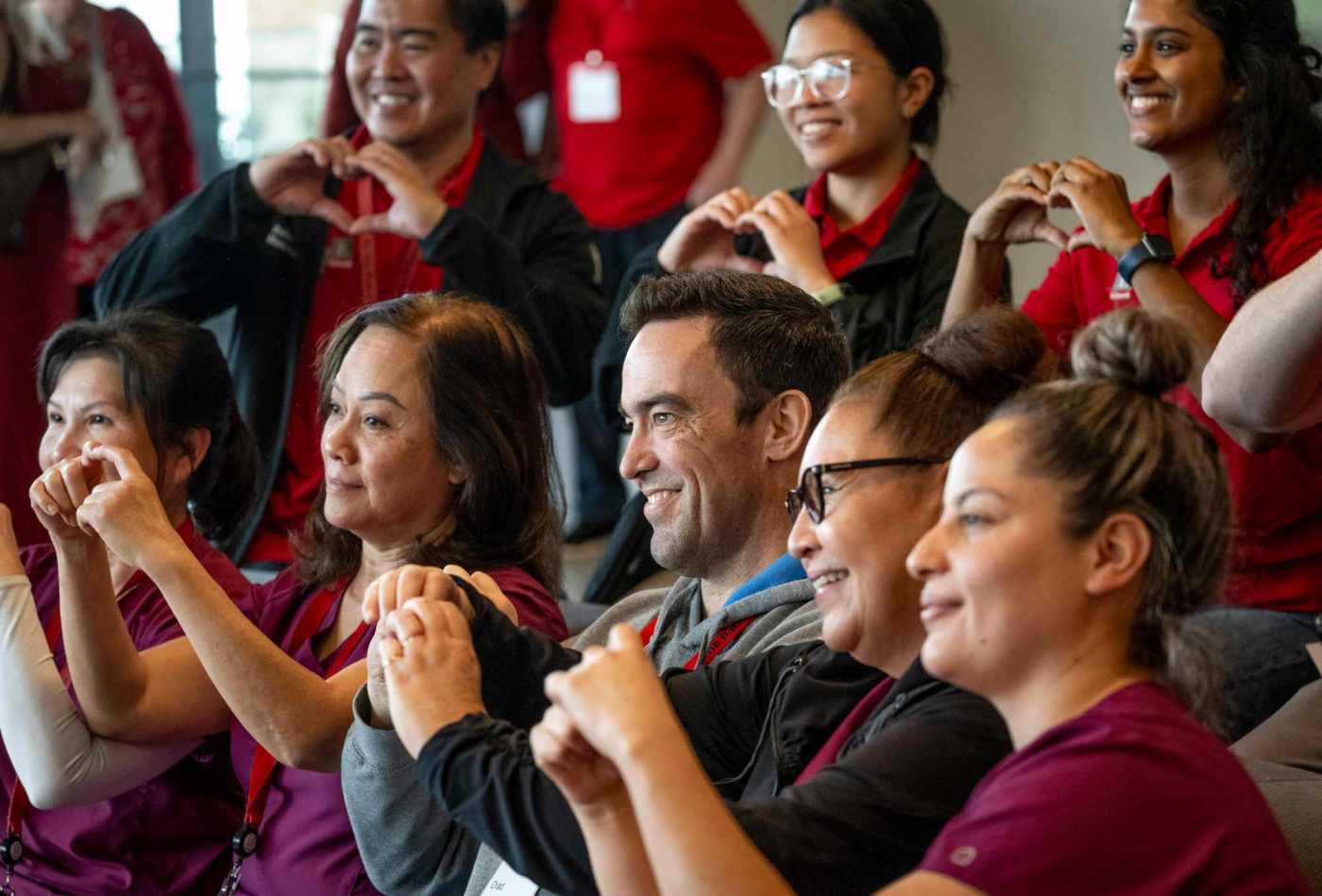Chad Darby’s life turned upside down after he felt a twinge in his chest during a CPR class.
The 51-year-old thought he was in good health, he was there to learn life-saving techniques should anything happen at home with his newborn twins.
Instead, he soon needed what was likely a life-or-death surgery. And, this week he met the Irvine-based team of medical device manufacturers at the heart of his recovery.
Out of an abundance of caution, Darby, now 53, of Seal Beach, scheduled an appointment with a cardiologist. To his shock, his doctor revealed to him he had an abnormal buildup of calcium on the largest valve to his heart — the aorta.
Within months, he required surgery to address the heart disease, a severe case of aortic stenosis. Left untreated, cases so severe have a two-year mortality rate close to 50%, even among patients who — like Darby — feel few if any symptoms.
During his open heart surgery, Darby’s cardiologist installed an aortic valve made out of treated cow heart-sac tissue and manufactured through a painstaking process at Edwards Lifesciences’ Irvine campus.
Every Edwards Lifesciences valve has a serial number that links the patient who received the valve to the exact team of employees who sewed the leaf-like device together in a process that takes hours and requires dozens of hands to make.
On Thursday, Darby and about 50 other heart valve recipients from across the country gathered in Irvine to meet the very teams that assembled the valves keeping them alive.
“I am grateful to every one of you,” Darby told a group of about 10 manufacturers and supervisors gathered around him. “Thank you all from the bottom of my heart, literally. You allowed me to continue to be a father.”
Tears welled all around.
Some of the employees who made Darby’s valve have worked in manufacturing at Edwards Lifesciences for 15 or more years. Several had never met a patient face-to-face who is alive thanks in large part to their work.
“I’m very proud,” said Kimanh Pham, a manufacturing operator with 15-plus years of experience assembling heart valves at the company. Darby is the second patient she’s met with a heart valve she personally sewed.
Not your mother’s sewing
The sewing the employees do, is not sewing as you know it.
Many of Edwards Lifesciences’ medical tech operators are recruited from the Los Angeles fashion district, but at the Irvine campus they work in an entirely different environment. Here, the conventional meaning of sewing hardly seems to capture what they do.
Under microscopes in a large laboratory, teams of workers sew together tissues so thin they are practically invisible to the naked eye.
The cow tissue from which the valve is cut resembles the off-white, wrinkled look of sushi ginger. The valve itself looks vaguely like a fine slice of watercress, yet, it has the durability to last Darby’s lifetime.
The finished product in Darby’s aorta is nearly as thin as a single piece of paper. Nevertheless, it was assembled from parts developed around the world and passed through the hands of 20 to 30 manufacturers, supervisors and quality control engineers before reaching his surgeon.
Related Articles
Should you be worried about bird flu? Here are 5 things to know about the virus
Bird flu is bad for poultry and dairy cows. It’s not a dire threat for most of us — yet
You’ve covered your copayment; now brace yourself for the ‘facility fee’
Genetics studies have a diversity problem that researchers struggle to fix
Are midwives and doulas the answer to keeping more Black babies alive?
“It takes a village to make this valve,” said technical supervisor Chris Pantaleon. Really, it takes a global supply chain.
This is a “labor of love,” Pantaleon said.
But, for Darby, the valve actually embodies love. It is part of his heart.
“Anytime you doubt your work, it’s worth it,” Darby told the team. “If not for you, I wouldn’t be with my kids today.”





